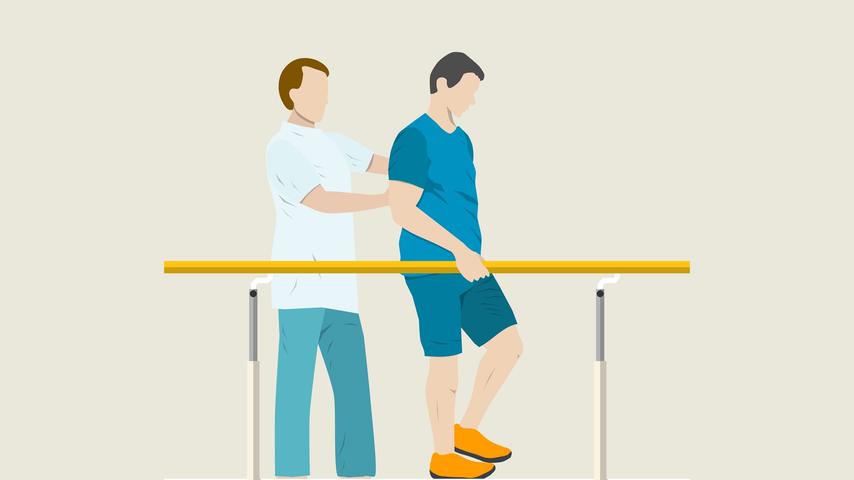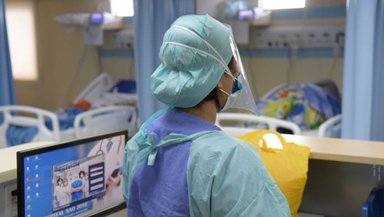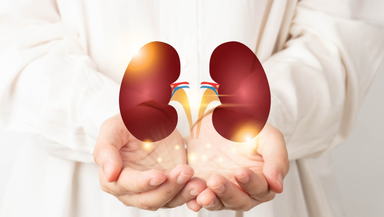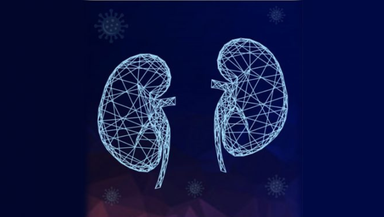Things You Need To Know About Orthopaedic Physiotherapy

What is Orthopedic Physiotherapy?
Orthopedic Physiotherapy aims to treat the ailments and injuries of the musculoskeletal system. The musculoskeletal system consists of bones, tendons, ligaments, muscles, and connective tissues. The system is essential to the human structure as it supports, helps movement, and protects the organs. Injuries, diseases, and irregularities lead to complications and disability and reduce the quality of life. Orthopedic Physiotherapy corrects defects, improves function, and enhances bone and muscle health.
What is the difference between Orthopedics and Physiotherapy?
Orthopedic Injuries like fractures and sprains and orthopedic conditions like arthritis are common. These injuries and illnesses need medical attention to prevent further complications. It is normal to get confused between orthopedic and physiotherapy treatment in such a situation. Both these specialities deal with musculoskeletal problems. The following differences distinguish the two treatments.
Orthopedics
Physiotherapy
Orthopedics treats conditions affecting the musculoskeletal system.
Physiotherapy aims at restoring function, improving balance, promoting recovery, and managing pain.
Includes diagnosis and treatment of musculoskeletal complications.
Employs methods and techniques for correcting musculoskeletal disorders and injuries.
Uses both surgical and non-surgical methods for treatment.
Uses only non-surgical methods
The person who specializes in orthopedic physical therapy is an Orthopedic Surgeon or Orthopedic Doctor.
The specialist who treats orthopedic conditions in physiotherapy is called a Physiotherapist.
Treats bones and muscles related conditions like
- Arthritis;
- Tendinitis;
- Osteoarthritis;
- Bursitis;
- Dislocation;
- Sprain;
- Bone Cancer;
- Orthopedic and Sports Physical Therapy
Treats disorders caused by musculoskeletal, neurological, and cardiopulmonary problems like
- Cerebral Stroke;
- Cerebral Palsy;
- Parkinson's disease;
- Rehabilitation post-surgery;
Visit Gleneagles Aware Hospitals, L B Nagar, Hyderabad, for consultation with Dr J.V.S. Vidya Sagar, Dr Ashwin Kumar, Dr V V Satyanarayana E
What conditions are treated in Ortho Therapy?
Ortho Therapy is a sub-speciality of physiotherapy. It treats musculoskeletal injuries and conditions to improve functioning and relieve pain. The different orthopedic conditions treated by ortho physical therapy are as follows:
- Orthopedic Injuries like fractures, sprains, and tears;
- Orthopedic Conditions like Oesthearthritis, Osteoporosis, Rheumatoid Arthritis, Spondylitis, Tendinitis, or Bursitis;
- Orthopedic rehabilitation of hips, foot, ankle, knee, and shoulder post-surgery;
- Mobility problems like Frozen Shoulder and tear in the rotator cuff;
- Conditions like Carpal Tunnel and Tennis Elbow caused due to nerve compression and over-repetition of movements.
- Trauma and orthopedic injuries sustained in an accident;
- Incorrect Posture;
- Improper Balance.
Enquire now or book an appointment at Gleneagles Aware Hospitals, L B Nagar, Hyderabad, for consultation with our experienced specialists.
What is the assessment procedure for Ortho Therapy?
Your orthopedic will perform the following steps to recommend an ortho physical therapy treatment.
- Noting and analyzing your medical history with orthopedic injuries or similar conditions;
- Observe and tests your movements for identifying imbalances;
- Physical examination of your movements, mobility, and reflexes;
- Identifying problem areas, functional imbalance, mobility issues, or any other abnormalities;
- Running diagnostic tests like X-rays and scans for detection.
What are the different types of Ortho Physiotherapy treatments?
The various treatments involved in ortho physical therapy are as follows:
- Manual Therapy:
Manual movements of joints for reducing pain and restoring mobility. Uses methods like mobilization and manipulation.
- Massage Therapy:
Application of light pressure for healing scar tissue in muscles and ligaments.
- Ultrasound Therapy:
Use of ultrasonic waves produced by an electric machine. The waves promote muscle relaxation, regeneration, increased circulation, and reduction in pain.
- Inferential Therapy (IFT):
Transmission of electric current through electrodes attached to the body. IFT is beneficial for reducing swelling and pain relief.
- Hot/Cold Therapy:
Cryotherapy (Cold) and thermal therapy (hot) reduce muscle swelling and pain.
- Traction:
Decompressing of joints in the lower back, neck, and spinal disc with the help of equipment or by the therapist.
- TENS:
Transcutaneous Electrical Nerve Stimulation (TENS) provides pain relief by blocking the brain's pain receptors through low-voltage electrical currents.
- NMES:
Neuromuscular Electrical Stimulation (NMES) facilitates muscle contraction to improve blood flow and promote healing of the injured muscles by sending electrical impulses to the nerve.
- Taping of the Joint:
For providing support to muscles and facilitating movement.
- Exercises at home:
To improve mobility, strengthen joints and muscles, and help you regain balance.
What are the benefits of Orthopedic Rehabilitation Physical Therapy?
Orthopedic Rehabilitation includes treatments adopted for promoting recovery after an injury or surgery. Orthopedic Physical Therapy, as a part of your rehabilitation, treats orthopedic issues like;
- Pain or reduced mobility in joints like shoulder, hips, elbows, knees, foot, or ankle;
- Orthopedic conditions like Arthritis;
- Orthopedic injuries like fractures, tears in ligaments and muscles;
- Replacement of joints;
- Nerves and tissue-related issues like Carpel tunnel and Tennis Elbow problems;
- Orthopedic Surgery for treating musculoskeletal problems.
While physiotherapists also treat these problems, an orthopedic specializes in orthopedic rehabilitation. Ortho Physiotherapy as a part of your rehabilitation programs gives you the following benefits:
- Improvement in mobility;
- Improvement in balance and posture;
- Improvement in muscular strength;
- Reduction in pain;
- Reduction in swelling and stiffness;
- Improved recovery after surgery;
- Optimization in the range of motion of joints;
- Reduced dependency on painkillers;
- Improved flexibility and reduction in the chances of injury.
Orthopedic Physiotherapy provides treatment and recovery for ortho-related issues. Enquire now or book an appointmentat Gleneagles Aware Hospitals, L B Nagar, Hyderabad, for consultation with the best orthopedics in hyderabad our experienced and renowned specialists.
Frequently Asked Questions (FAQ)
How long is the recovery time for orthopedic surgery?
The recovery time varies depending on the injury, the type of treatment, age, and fitness levels.
When is orthopedic surgery performed?
Orthopedic surgery is performed for replacements of joints like knee or hip. It can be performed for diagnostic purposes or when the condition is untreatable through ortho physical therapy.
What are the side effects of the treatments?
You may experience side effects like
- muscle soreness and tenderness;
- fatigue;
- swelling;
- reaction to ointments and solutions used in the treatment.
What kind of exercises are performed in Ortho Therapy?
- Stretching exercises;
- Plyometric exercise for enhancing endurance;
- Mobility exercises to improve range of motion;
- Exercises to improve balance and posture.










